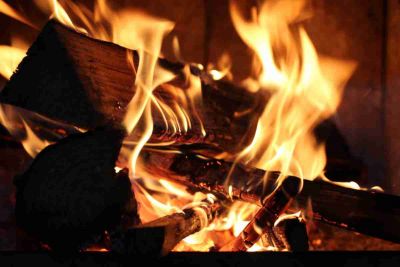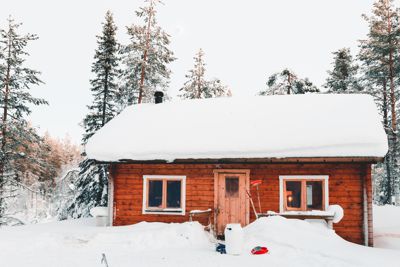Archive for March 2019
Have you ever noticed that your house is extra chilly in certain areas? While this phenomenon may be associated with ghostly activities, if the cold is close to an area with windows or doors you can breathe a big sigh of relief. Thresholds are one of the toughest areas of the house to insulate and could be where a lot of your heat is escaping. But using the right materials will help keep the cold from knocking at your door this winter.
Some of the typical steps that can be taken to insulate a house include weatherstripping windows and doors, insulating the attic and box sills and caulking. The primary end of these methods is to stop excess cold air from infiltrating the house. But the materials you choose can play a major part in temperature control as well. This is because heat transfer is a form of conduction. Keeping your home better insulated with less conductive materials can help that wood stove go further to keeping you warm and prevents as much heat from going to waste.
Quantifying Heat Transfer with R-Value
To understand how insulation is measured, we have to take a look what engineers and builders call the “R-value.”
The R-value is a metric that is used to quantify a barrier’s effectiveness at block the conductive flow of heat. The higher this number is, the more effective it is at stopping heat from leaching through.
The transfer of heat through an object is determined by the difference in temperature between each side and the material’s resistance to conduction. This difference can be divided by the R-value and multiplied by the total surface area of the barrier to give the total amount of heat transference through the barrier in terms of BTUs per hour.
For a variety of reasons, including security, weather resistance and superior R-value, hollow metal doors are going to be the best choice for almost any exterior application. Beyond the door’s frame, the next most influential property to R-value is going to be the composition of the door’s inner core..
A Comparison of Cores
You may not think about it much, but with the exception of antique doors, the interior is normally hollow. If this weren’t the case, doors would be extremely heavy and material-intensive to produce. While modern solid core doors do exist, they are typically retained for specialized purposes where the additional expense is deemed necessary.
So what’s inside a hollow door? To add additional stiffness, weather resistance and insulation, door manufacturers fill the inside of the door with some type relatively lightweight material. This core can be made out of a variety of materials which affect the door’s cost and structural properties. For the purposes of this article, we’ll be focusing particularly on insulation.
Honeycomb
The first common type of core found in doors is called a “honeycomb core,” named after the hexagonal lattice it is made up of. You may be surprised to hear that this material is actually a type of cardboard. However, in this case it is hardened with a special resin to increase structural rigidity. The honeycomb pattern allows manufacturers to maximize the stiffening property of the material without adding excessive weight to the door. This provides significant durability and is cost-effective to manufacture but doesn’t provide much in the way of insulation. It is also effective at disrupting soundwaves to provide a reasonable level of sound dampening. With a low R-value, the doors have good stability but aren’t the best for exteriors. If you’re looking to save on energy costs and minimize the amount of temperature transfer through thresholds then honeycomb core doors aren’t going to be the best choice.
Polystyrene
The next, more insulating material is polystyrene, which is sometimes abbreviated as EPS (for expanded polystyrene). EPS cores are both cost effective and provide fairly good insulation. It is the same type of foam you might find as packing material in boxes or in the shape of disposable coffee cups. The material provides stiffness and helps serve to prevent moisture from getting inside the hollow of the door. With a thermal resistance ranging from R-3 to R-5, EPS is a better insulator than honeycomb but still doesn’t offer the most insulation against cold temperatures.
Polyurethane
Polyurethane is more dense than polystyrene and therefore provides more resistance to temperature change. During the manufacturing process, it can start out as a liquid spray that expands and dries, filling the inside of the door thoroughly and bonding to the frame which adds additional strength to the door. Alternatively, there are versions that are installed as rigid boards more like polystyrene, but with the added density of polyurethane. The material is ideal for exterior openings in cold climates as it provides some of the best insulation available. The lowest level of polyurethane insulation is going to be as good or better than the best level of polystyrene insulation. It’s R-value is normally somewhere between R-6 and R-8.
Part of polyurethane’s propensity for insulating is due to pockets of low-conductivity gas contained in the material known as hydrochlorofluorocarbon. During the first two years after manufacturing, some of this gas escapes the pockets and the door’s insulative properties are slightly reduced. However, this is a fairly minimal reduction and after the first two years the hydrocholorofluorocarbon content of the polyurethane will remain relatively unchanged.
The Bottom Line
For those looking for a reasonable amount of insulation, both EPS and polyurethane core doors will be sufficient. But if you live in a colder climate, going polyurethane is most likely worth the slight additional cost of the material.
Hopefully this guide helps to give a good basic overview of common door materials and their insulative properties. While nothing replaces the warmth of a good fire, adding a little more insulation can help those logs go just a bit further to warm the inside of your house and keep cold from barging in. Unless, of course, it turns out the cold spots are from a ghost after all.


